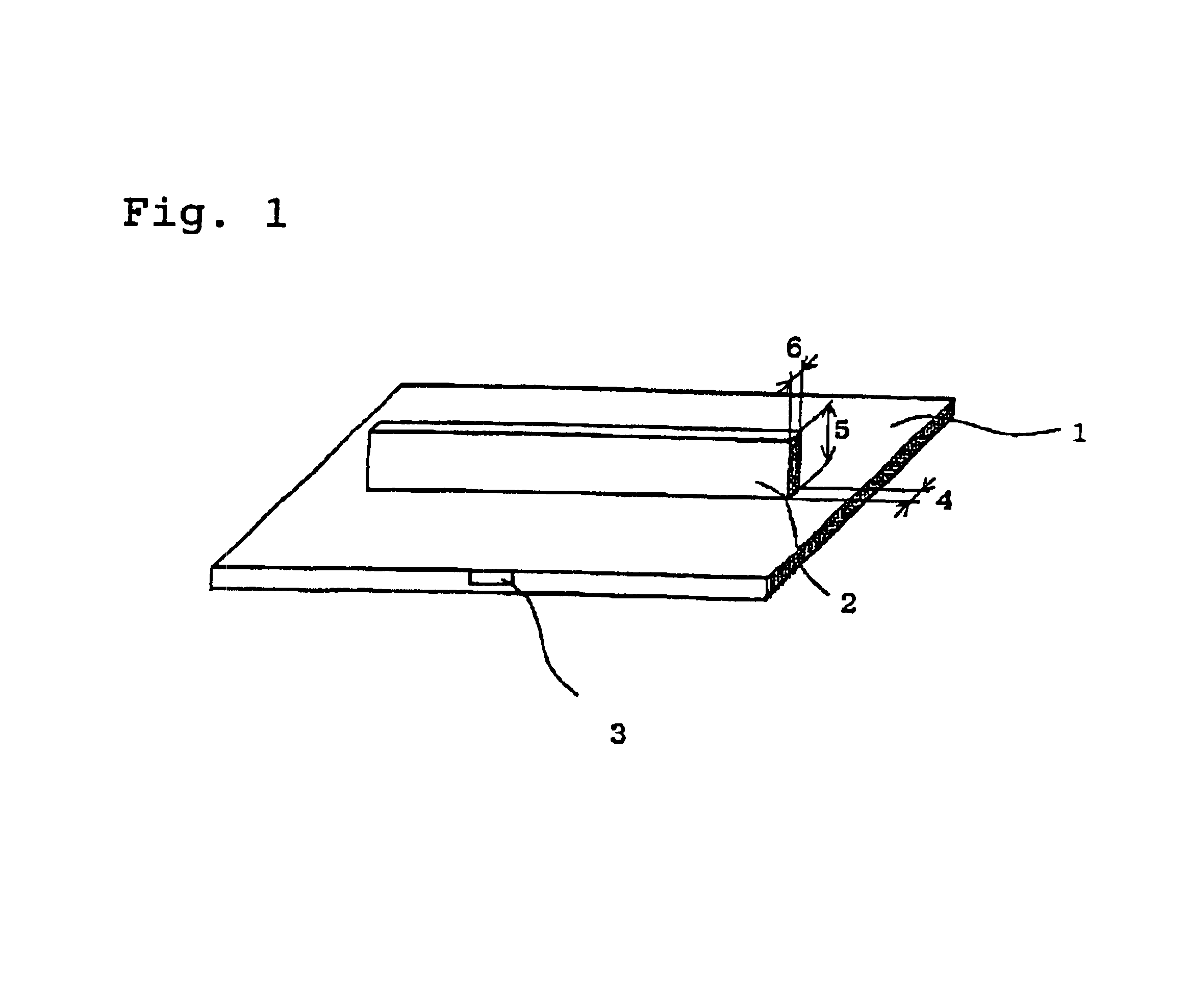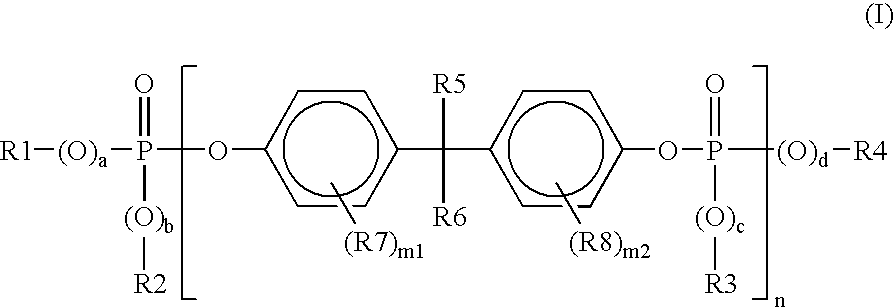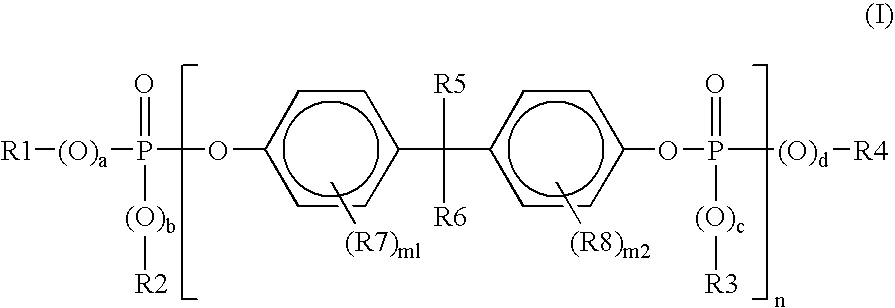Flame-retardant resin composition
a flame-retardant resin and composition technology, applied in the direction of plastic/resin/waxes insulators, dyeing process, group 5/15 element organic compounds, etc., can solve the problems of easy volatile above flame-retardant, difficult to solve, and impaired resin properties
- Summary
- Abstract
- Description
- Claims
- Application Information
AI Technical Summary
Benefits of technology
Problems solved by technology
Method used
Image
Examples
examples
[0243]The present invention will be further explained with reference to Examples hereinafter. In Examples, “% by weight” is a ratio when the total weight of Component A and Component B is 100% by weight, and “part by weight” is a ratio when the total weight of Component A and Component B is 100 parts by weight. Further, “part” stands for “part by weight”. Evaluations were made on the basis of the following methods.
[0244](1) Items of Evaluation
[0245](a) Deflection temperature under load: Measured under a load of 1.80 MPa according to ISO75.
[0246](b) Impact value: Measured for notched Charpy impact strength according to ISO179.
[0247](c) Flexural modulus: Measured at a testing rate of 2 mm / minute according to ISO178.
[0248](d) Flame retardancy: Test samples having a thickness of 3.0, 2.8, 2.6, 1.6, 1.4 and 1.2 mm were subjected to a combustion test according to UL standard 94V.
[0249](e) Appearance of molded product with a rib: Molded products having a rib shown in FIG. 1 were formed wit...
PUM
| Property | Measurement | Unit |
|---|---|---|
| humidity | aaaaa | aaaaa |
| humidity | aaaaa | aaaaa |
| acid value | aaaaa | aaaaa |
Abstract
Description
Claims
Application Information
 Login to View More
Login to View More - R&D
- Intellectual Property
- Life Sciences
- Materials
- Tech Scout
- Unparalleled Data Quality
- Higher Quality Content
- 60% Fewer Hallucinations
Browse by: Latest US Patents, China's latest patents, Technical Efficacy Thesaurus, Application Domain, Technology Topic, Popular Technical Reports.
© 2025 PatSnap. All rights reserved.Legal|Privacy policy|Modern Slavery Act Transparency Statement|Sitemap|About US| Contact US: help@patsnap.com



